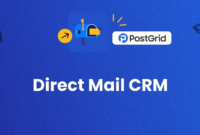CRM Website: The Gateway to Seamless Customer Management and Engagement
Introduction
In today’s digital age, a website is more than just an online presence; it’s a powerful tool for customer engagement and relationship building. When integrated with a Customer Relationship Management (CRM) system, a website becomes a central hub for collecting, managing, and utilizing customer data.
A CRM website not only enhances the user experience but also empowers businesses to streamline operations, improve customer interactions, and achieve their goals efficiently. This article explores the concept of a CRM website, its benefits, and best practices for leveraging it to drive business success.
What is a CRM Website?
A CRM website is a business website seamlessly integrated with a CRM system. This integration allows businesses to capture customer data from website interactions, such as form submissions, purchases, and inquiries, and store it in the CRM.
The data is then used to automate processes, personalize customer experiences, and improve marketing, sales, and customer support efforts. A CRM website bridges the gap between a business’s online presence and its backend operations.
Benefits of a CRM Website
1. Enhanced Customer Insights
A CRM website collects valuable data, such as user preferences, behavior, and interaction history, enabling businesses to understand their audience better.
2. Improved Lead Management
Capture leads directly from your website through forms, chatbots, or landing pages, and route them automatically into the CRM for follow-up.
3. Personalized User Experience
Use CRM data to tailor website content, recommendations, and interactions to individual users, increasing engagement and satisfaction.
4. Streamlined Operations
Integrating your website with a CRM eliminates the need for manual data entry, reducing errors and saving time.
5. Boosted Sales and Conversions
A CRM website allows businesses to nurture leads effectively, track customer journeys, and optimize sales strategies, leading to higher conversion rates.
6. Real-Time Customer Support
Combine CRM tools with website chat functionality to provide instant, personalized support, improving customer satisfaction and retention.
Key Features of a CRM Website
1. Lead Capture Forms
Dynamic forms that sync with the CRM ensure all inquiries, registrations, or subscriptions are recorded for follow-up.
2. Integrated Chatbots
AI-powered chatbots linked to the CRM provide real-time assistance and collect valuable customer data.
3. Customer Portals
A secure, CRM-connected portal allows customers to view their account information, track orders, or access support resources.
4. Analytics and Reporting
Built-in analytics track website performance, user behavior, and conversion metrics, feeding valuable insights into the CRM.
5. E-commerce Integration
For businesses with online stores, integrating CRM ensures seamless tracking of purchases, preferences, and order histories.
6. Marketing Automation
Use CRM data to trigger personalized email campaigns, promotions, or retargeting ads based on user actions on the website.
Applications of CRM Websites
1. E-commerce
Online retailers use CRM websites to recommend products based on browsing history, manage customer orders, and re-engage abandoned cart users.
2. Service-Based Businesses
Service providers leverage CRM websites to schedule appointments, manage inquiries, and provide personalized service updates.
3. Nonprofits
Nonprofit organizations use CRM websites to track donations, engage supporters, and manage volunteer sign-ups.
4. Educational Institutions
Schools and universities use CRM websites to manage student applications, provide course information, and communicate with prospects.
5. Healthcare Providers
CRM websites help healthcare providers streamline patient interactions, schedule appointments, and manage medical records.
Best Practices for Creating a CRM Website
1. Choose the Right CRM
Select a CRM system that aligns with your business goals and integrates seamlessly with your website platform.
2. Optimize for User Experience
Ensure the website is easy to navigate, mobile-friendly, and offers a smooth user experience to encourage interactions.
3. Implement Secure Data Handling
Use encryption and comply with data protection regulations like GDPR to safeguard customer information.
4. Focus on Integration
Ensure that the CRM and website share data seamlessly. Use APIs or third-party tools if necessary.
5. Personalize Content
Leverage CRM data to create personalized website experiences, such as tailored product recommendations or user-specific dashboards.
6. Monitor and Optimize
Regularly analyze website performance and user behavior to identify areas for improvement and optimize accordingly.
Challenges and How to Overcome Them
1. Integration Complexity
Integrating a CRM with an existing website can be technically challenging. Work with experienced developers or choose CRM solutions with robust integration capabilities.
2. Data Overload
Managing large volumes of customer data can be overwhelming. Use segmentation and automation tools within your CRM to keep data organized and actionable.
3. Compliance Issues
Ensure your CRM website complies with data privacy laws by obtaining user consent and providing clear opt-out options.
Future Trends in CRM Websites
1. AI-Powered Personalization
Artificial intelligence will enable even more sophisticated personalization, using predictive analytics to anticipate user needs.
2. Voice and Conversational Interfaces
Voice search and AI-driven chat interfaces will become integral to CRM websites, improving accessibility and engagement.
3. Omnichannel Integration
CRM websites will increasingly integrate with social media, email, and other channels to create a unified customer experience.
4. Real-Time Data Syncing
Future CRM systems will offer instant syncing, ensuring that website interactions are immediately reflected in customer records.
Conclusion
A CRM website is more than a digital storefront—it’s a strategic tool that enables businesses to connect with customers, streamline operations, and drive growth. By integrating CRM functionality into your website, you can transform it into a powerhouse of data-driven insights, personalized experiences, and operational efficiency.
In a world where customer expectations are constantly evolving, a CRM website is not just an option but a necessity for businesses seeking to stay competitive and deliver exceptional value.




